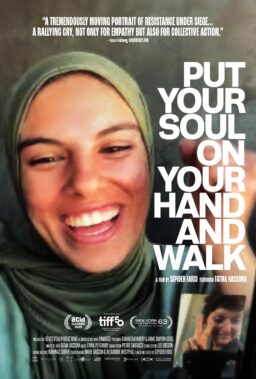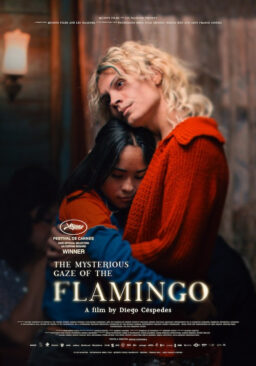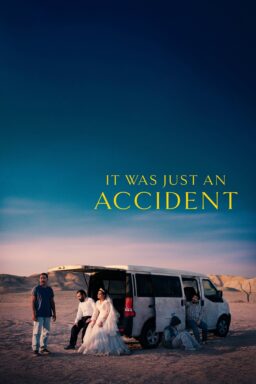BOULDER, Colo.–We have finally met defeat. A film has resisted our efforts to pound it into submission, Every year I join some 1000 students and townspeople here at the University of Colorado on a 5-day, 12-hour shot-by-shot trek through a film. Using the freeze-frame and slow-motion features of a DVD, we track down symbols, expose hidden messages, analyze visual strategies, expose special effects, and in general satisfy ourselves that we have extracted every fugitive scrap of meaning from the movie under discussion.
This year the target was David Lynch’s “Mulholland Drive.” It is a film I greatly admire, and indeed it was on my Top 10 list for 2001. I still admire it, perhaps more than before. But I also find it more of a mystery. Here at the Conference on World Affairs, we gathered in Macky Auditorium every afternoon to look at the film together. We were sitting in the dark, so the voices were anonymous. Anyone in the hall could shout out “Stop!,” and we would freeze-frame the film, and discuss what the shouter found intriguing. This process was named “Cinema Interruptus” by the late Prof. Howard Higman, founder of the conference.
Because I’ve been doing this at Boulder for 30 years, the audience includes seasoned veterans. Not much eludes our collective mind and eye. We’ve looked at classics like “Citizen Kane,” “Vertigo” and “The Third Man,” modern masterpieces like “Raging Bull,” “The Silence of the Lambs” and “Pulp Fiction,” foreign landmarks like “La Dolce Vita” and “Persona,” and contentious films like “Fight Club“–last year’s selection, a film I remained convinced, at the end of the week, consisted of two brilliant acts and a broken ending.
This year I chose “Mulholland Drive” because I wanted to get to the bottom of its dream images and shifting realities. “The characters fracture and recombine like flesh caught in a kaleidoscope,” I wrote in my original review. “‘Mulholland Drive‘ isn’t like ‘Memento,’ where if you watch it closely enough you can hope to explain the mystery.”
Analysis of the film ranges all the way from “it’s all a dream” to a 6,000-word dissection on Salon.com which attempts to account for every scene (although even Salon, confronted with the movie’s mysterious little blue box, admitted “We don’t know about the box”).
In my review, I wrote, “‘Mulholland Drive‘ is all dream. There is nothing that is intended to be a waking moment. Like real dreams, it does not explain, does not complete its sequences, lingers over what it finds fascinating, dismisses unpromising plotlines. If you want an explanation for the last half hour of the film, think of it as the dreamer rising slowly to consciousness, as threads from the dream fight for space with recent memories from real life, and with fragments of other dreams–old ones and those still in development.”
Did I still believe this at the end of the week? Yes, and definitely no.
The last half hour of the film does suggest a level of reality, although I still believe that real life and fragments of dream are interconnected. The more times you watch the film, the more the buried structure reveals itself. At the most basic level, I believe “Mulholland Drive” involves a failed blonde actress named Diane Selwyn, disappointed in love by a brunette woman, who hires a hit-man to kill her. Neither Diane nor her lover looks the same at the reality level as at the dream level, although the blonde actress is played all the way through by Naomi Watts.
Most of the movie involves Selwyn’s dreams or nightmares, in which she appears as a chirpy young actress named Betty. Her brunette love in the dreams is a slinky 40s-style sexpot named Rita (played by Laura Elena Herring). In the dreams, Betty and “Rita” (a name taken by the amnesiac sexpot from a Rita Hayworth movie poster) investigate Rita’s missing identity, Nancy Drew-style, and become involved, at various levels of reality, with the casting and production of a movie. There is also material about gangsters who are dictating a casting choice to the film’s director (Justin Theroux). There are scenes at which neither “Betty” not “Rita” are present; there is a haunting performance in a nightclub; there is a monstrous homeless man (played by a woman) behind a diner where several crucial conversations take place; musical numbers are performed; a decomposing corpse makes an appearance; a man in a wheelchair wields great power; a cheery elderly couple turn up later reduced to cockroach-size, and there are two lesbian scenes of unusual frankness for today’s Hollywood–perhaps because one is Diane Selwyn’s erotic dream, and the other her masturbatory fantasy.
Well, yes, you’re thinking, I’ve seen the movie, so tell me something new. But that, you see, is precisely what I was unable to do by the end of the week. Having trekked through “Mulholland Drive” in great detail, I confess myself still outside looking in. I speak for many of my fellow Interrupti, whose interpretations ranged from “her life is flashing before her eyes at the moment of death” to “it’s a version of the Odyssey, with every character corresponding to a character in Greek mythology.”
In short: “Mulholland Drive” resists, defies and finally defeats logical explanation. It is impossible to produce a consistent precis of the film that accounts for everything. And there is an admirable reason for this: Like a dream, it does not have to make sense.
And yet the movie still plays–like a movie. Every individual sequence is satisfactory and effective in and of itself. It’s just that they resist efforts to make them neatly add up. Often we seem to watch fragments of other movies, or threads of this one never completed.
An early conversation between two detectives, for example, hits the familiar rhythm of a police procedural, but then the cops never turn up again. The first lesbian scene is moody and erotic (and contains the movie’s best laugh), but later we suspect that both of the women in the scene may in fact be the same woman–that Betty is Diane’s dream-self, and Rita is a Betty-fantasy replacing Diane’s real-life partner, who is not as attractive.
In our shot-by-shot progress, we found many details I had not seen before. Consider the mysterious man in the wheelchair. He is played by Michael J. Anderson, who is 43 inches tall. But is the man in the wheelchair a dwarf? Or is the body in the wheelchair a fake, with Anderson standing behind it, his face positioned atop the dummy’s shirt collar? That’s what someone suggested. We looked at it several times. Looks like it could be possible.
Something else we spotted: In a closing scene, as Diane reaches into a bureau drawer to take out a gun, there is a split-second glimpse of–the mysterious blue box. Earlier in the film, this box is introduced with a triangular blue key. In one of the “real” scenes, a hit man tells Diane that when she finds a blue key (not the same one), she will know the hit has taken place. Perhaps the blue box represents no secrets, but is simply a possession which Diane’s dream combines with a blue key to symbolize the death she has paid for. And the monster behind the diner, who has the blue box in its paper bag, may be a displaced form of the decomposing corpse that Betty and Rita find in the dream, and that Diane imagines is the result of the hit? (Unless, of course, that is Diane’s corpse.)
And so on. One clue to the movie may be the confusing number of blonde actresses. Naomi Watts plays Betty and Diane, who look so different (Salon notes) that Watts deserves praise for creating such different appearances, Then there is a waitress in the diner, named Diane Selwyn, who is not played by Watts (although the dreamer may have transferred her own name to the waitresses’ name tag). And a singer in an audition scene who looks confusingly like Betty, but isn’t.
I mention all these blondes not to explain them, but to remind us of a 1977 Luis Bunuel film named “That Obscure Object of Desire,” in which two different actresses interchangeably played the heroine, with no explanation, and without any of the other characters noticing. Bunuel was a surrealist, and Lynch’s work has always suggested that he treasures him. Perhaps “Mulholland Drive” can be seen as the first surrealist film of the 21st century.
I suspect the best way to appreciate “Mulholland Drive” is simply to experience it as a series of scenes, each one with a power and consistency of its own, that do not “add up” to a logical plot summary, or cannot be reduced to an explanation–although various patterns and narratives form out of the mist and then evaporate. As we all staggered out at the end of our Boulder odyssey, that seemed to be the consensus–although I am still getting e-mails from people who have suddenly figured it all out.











